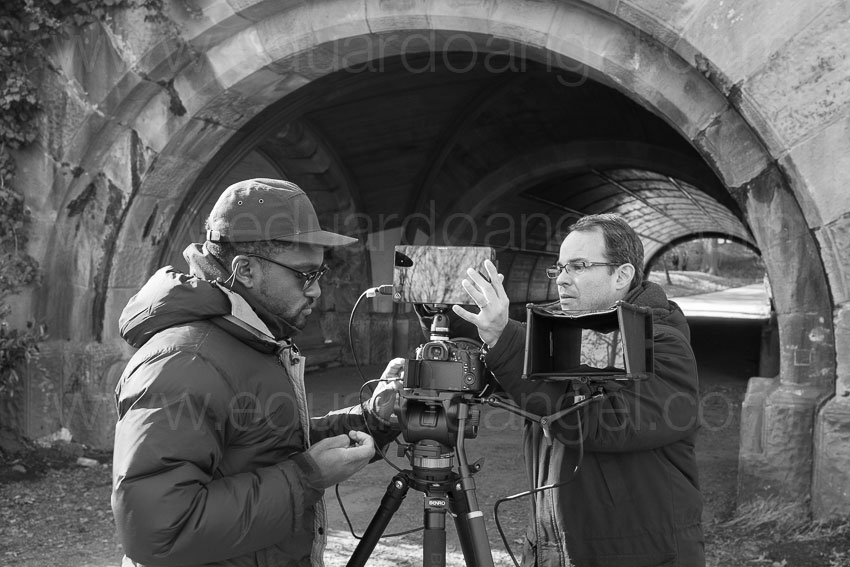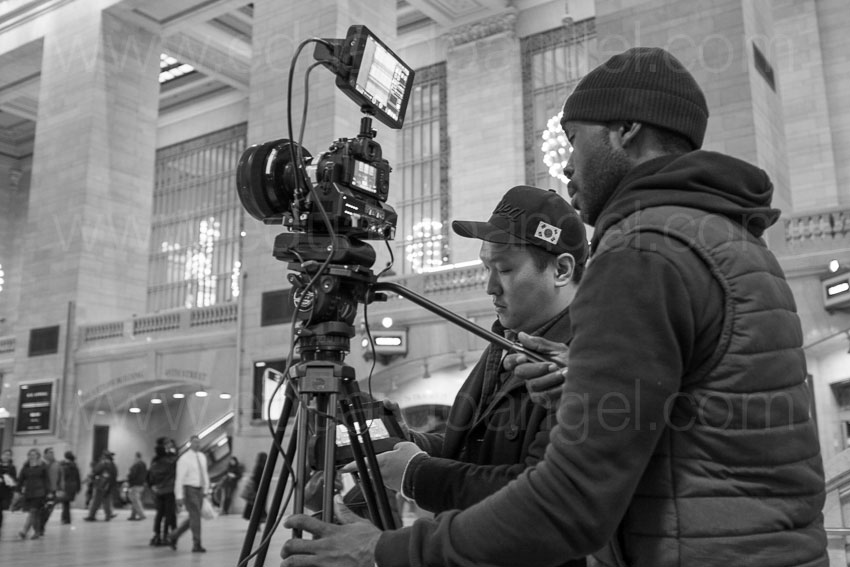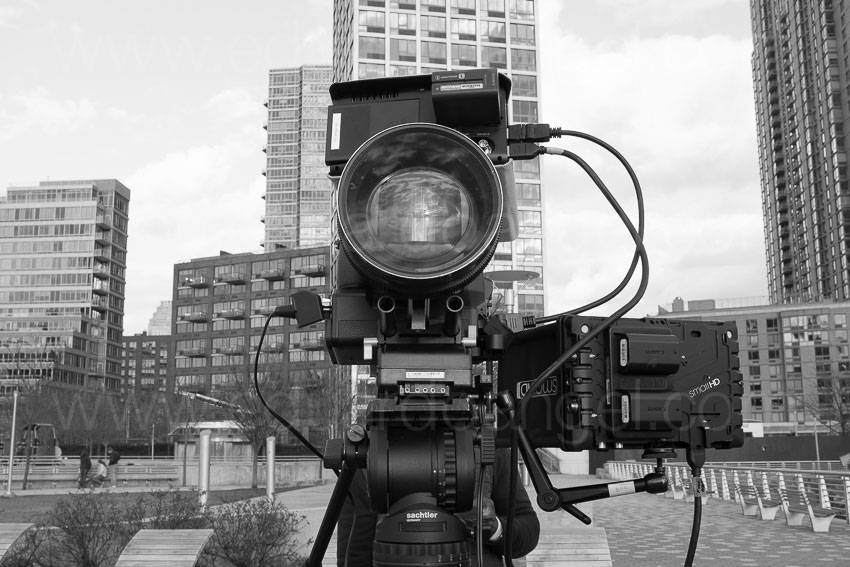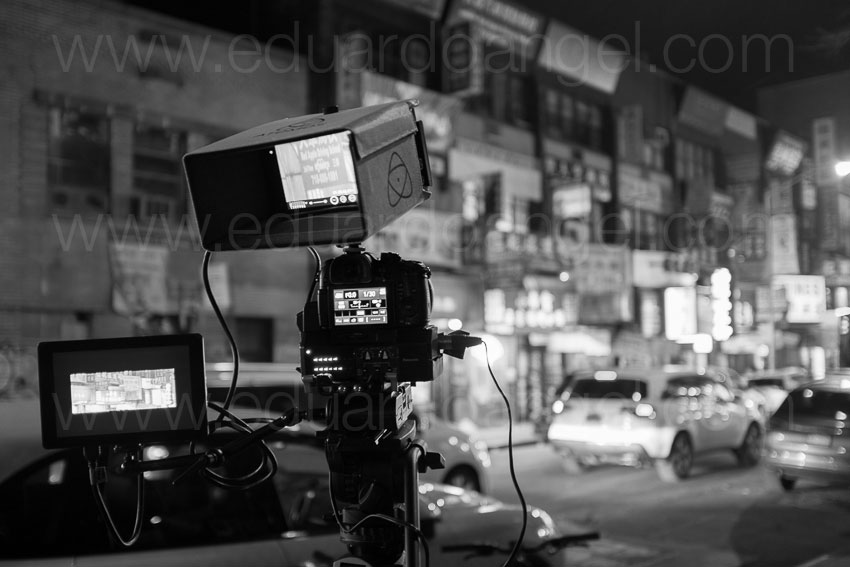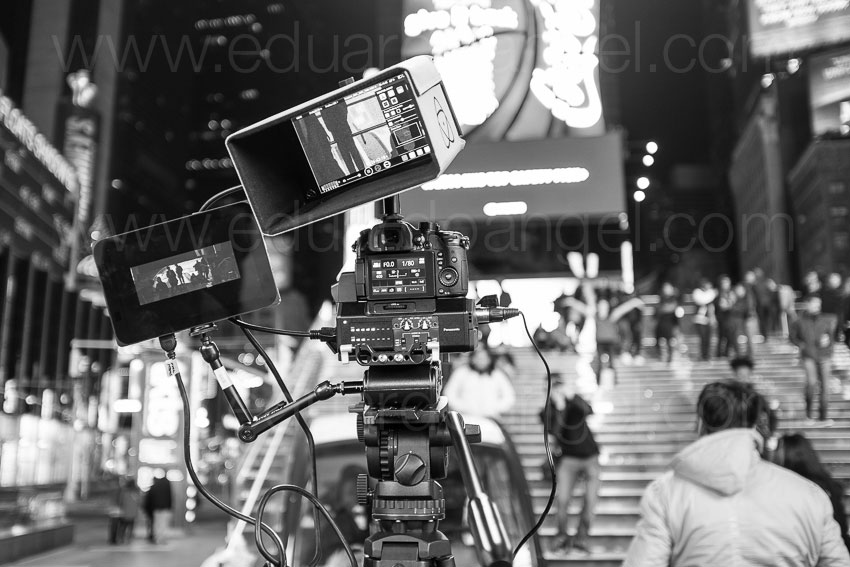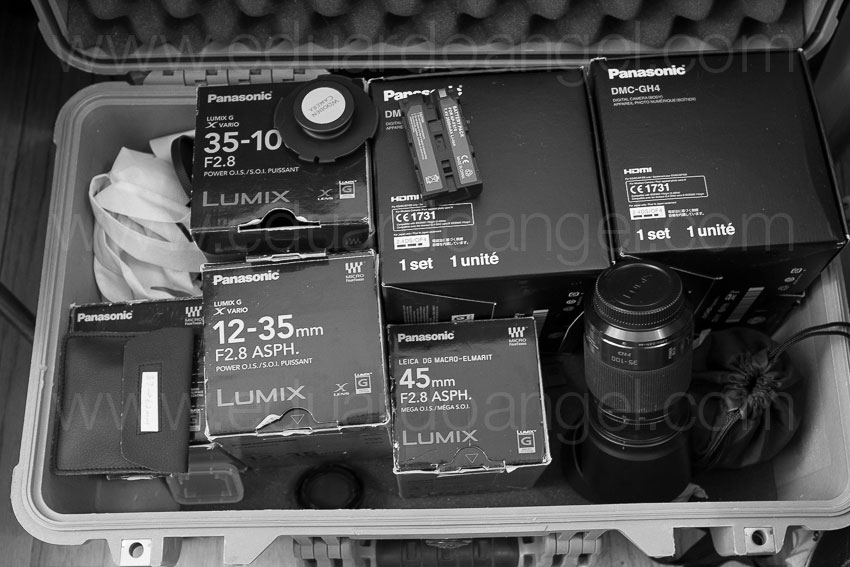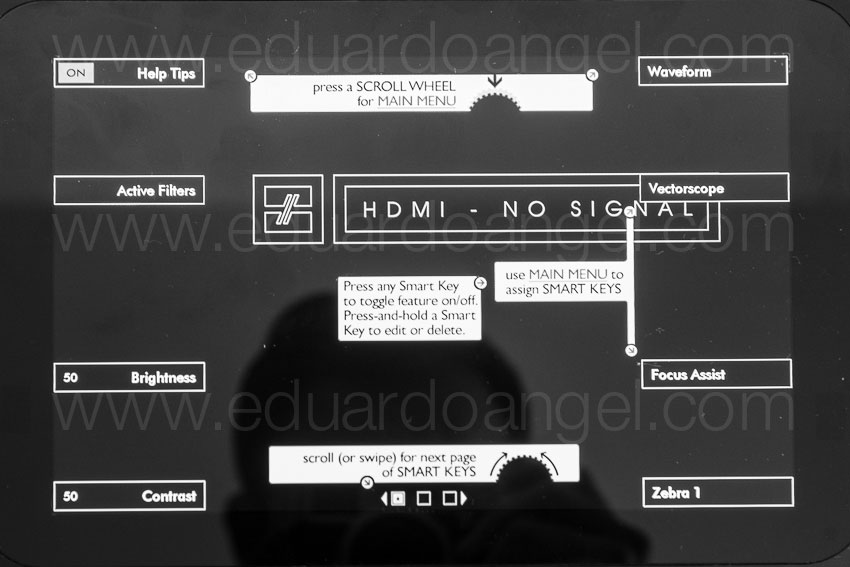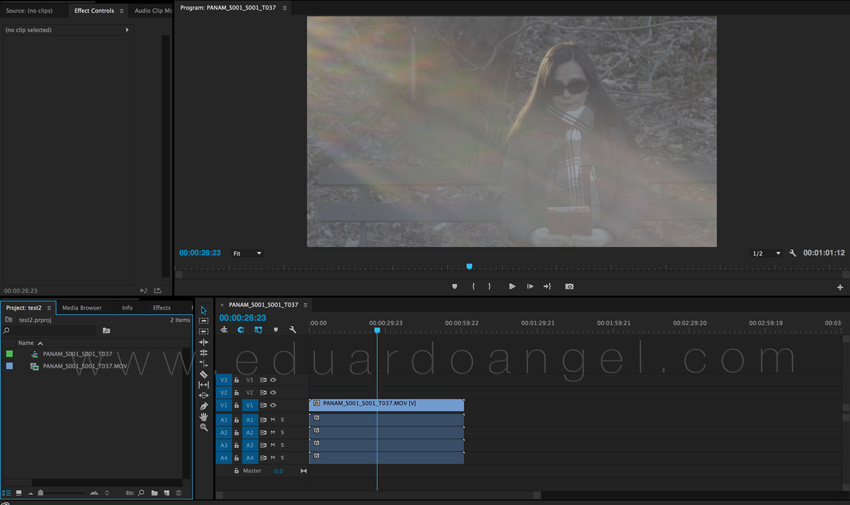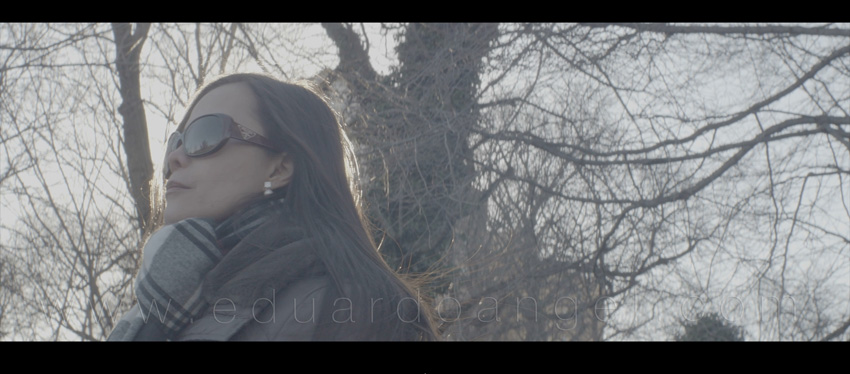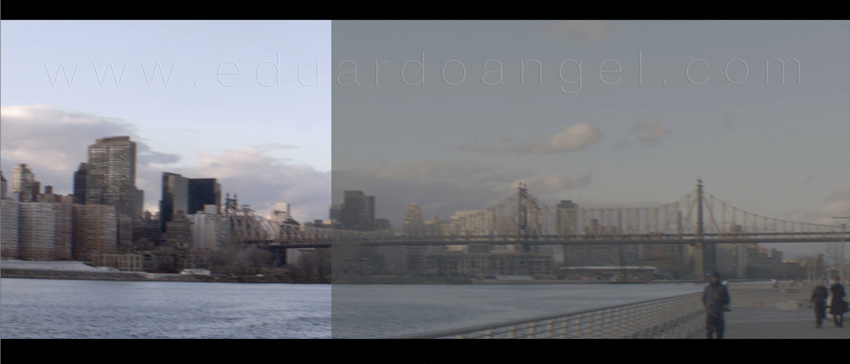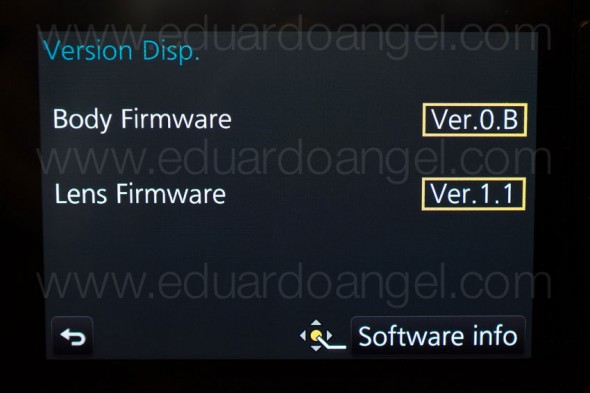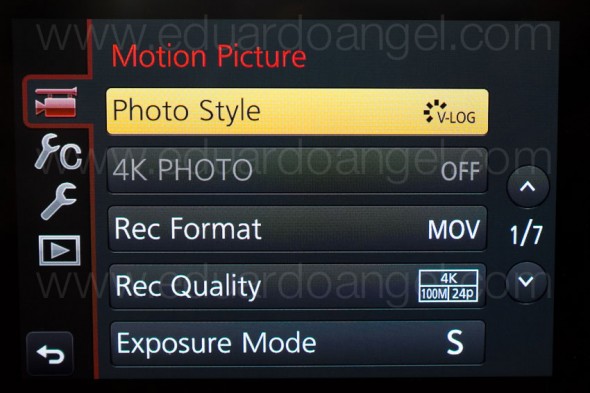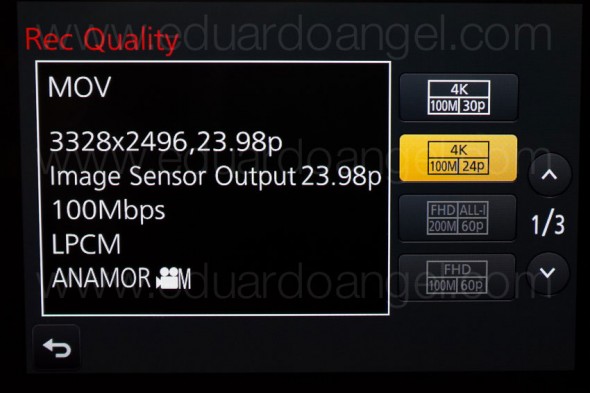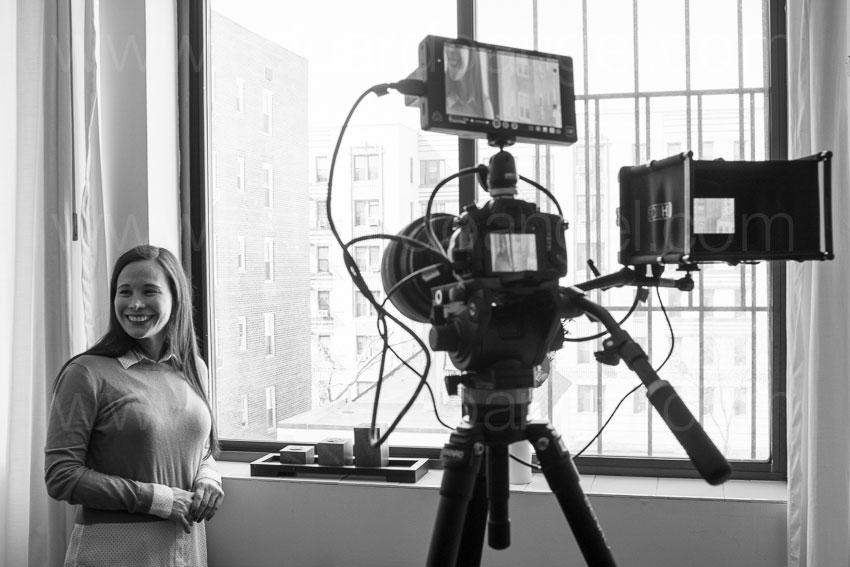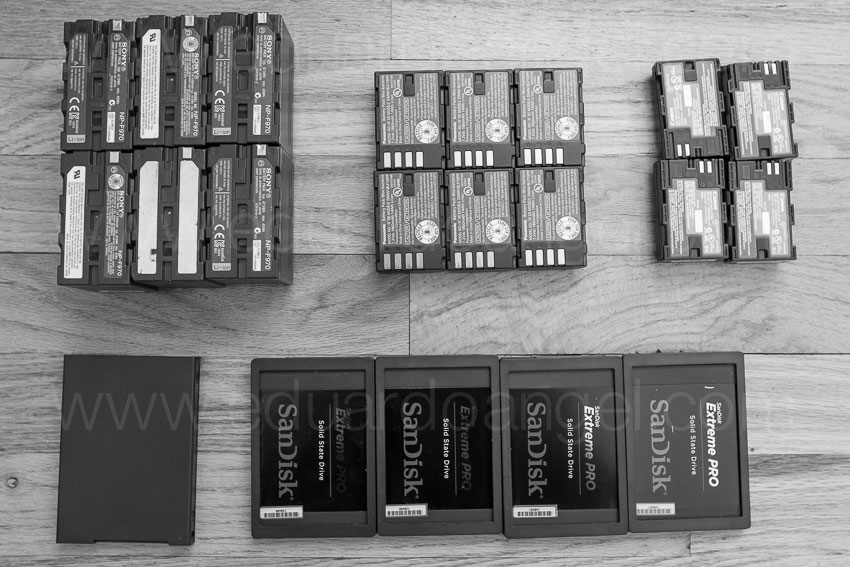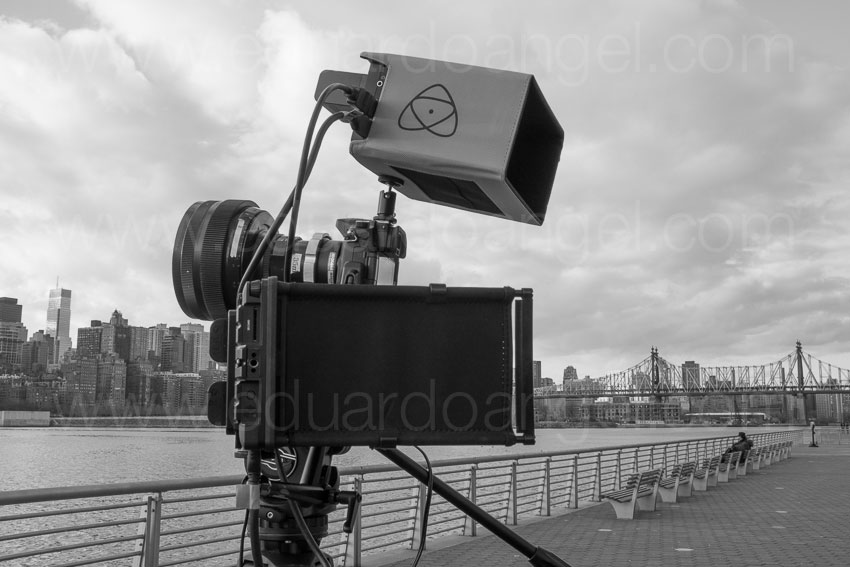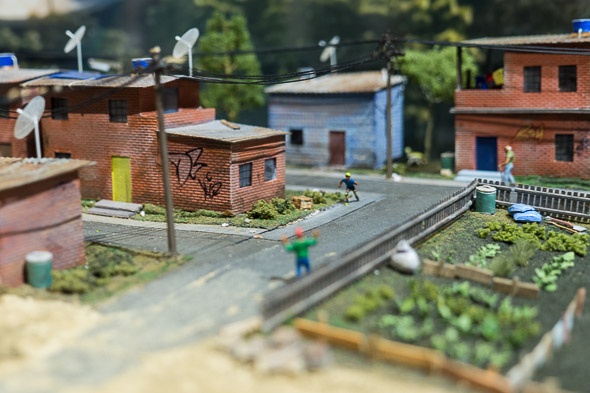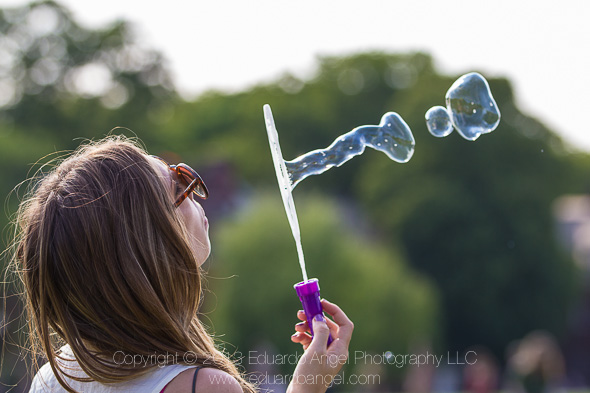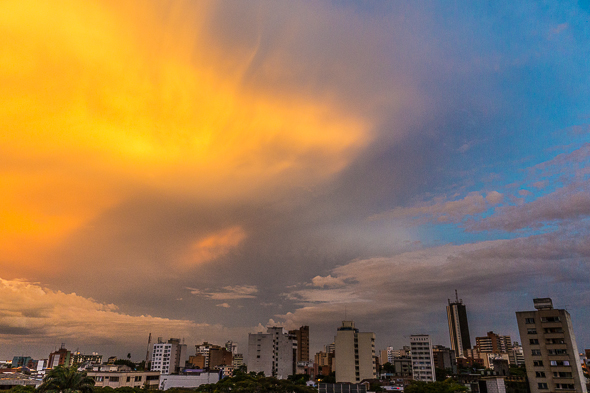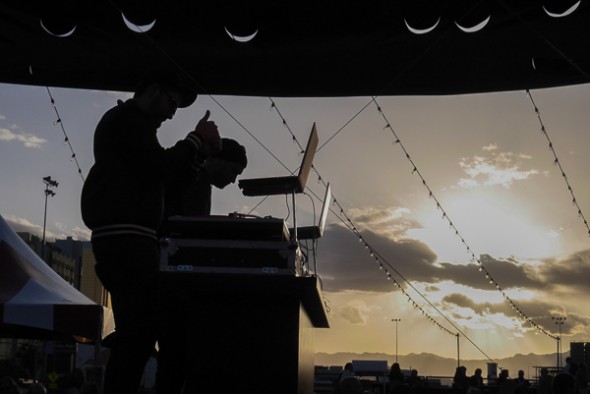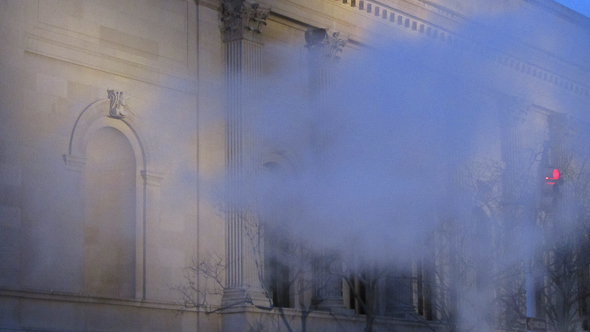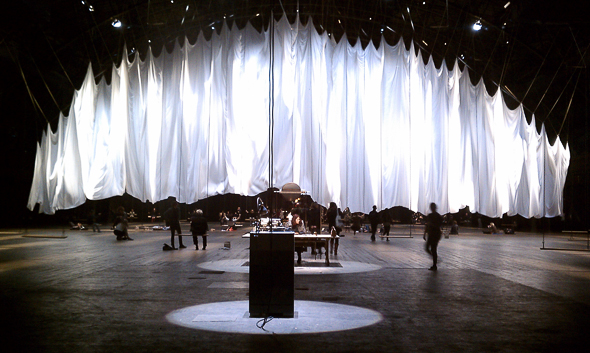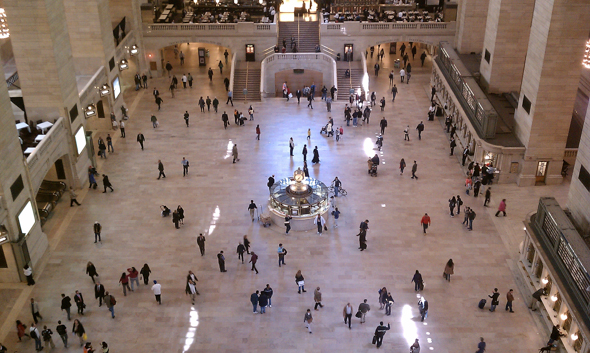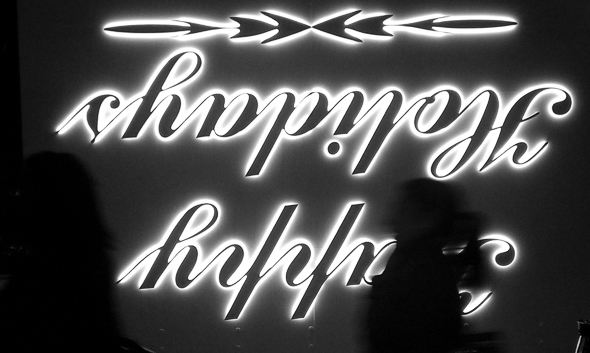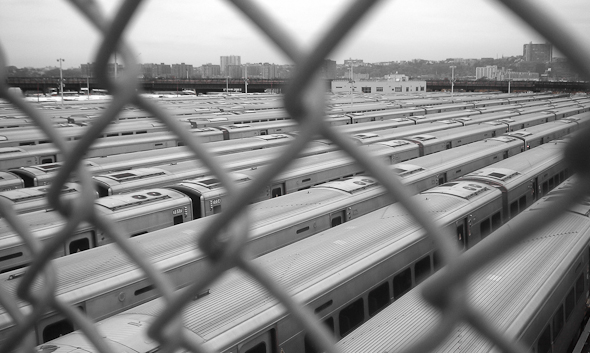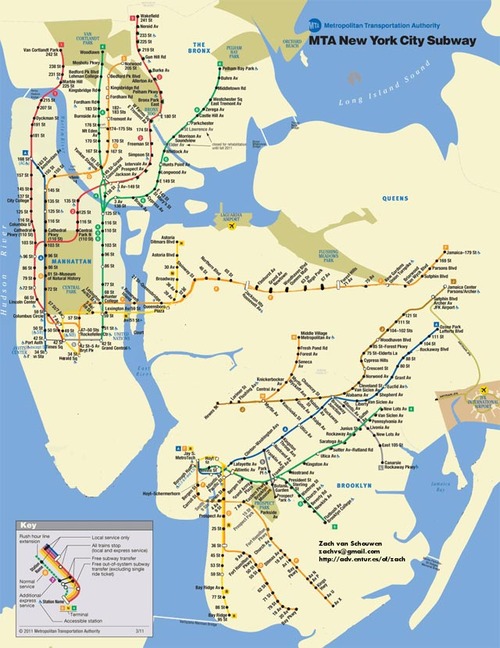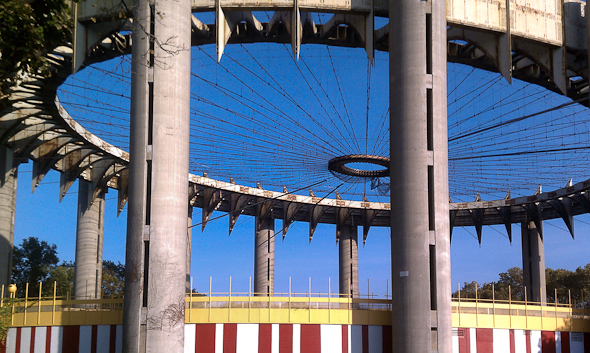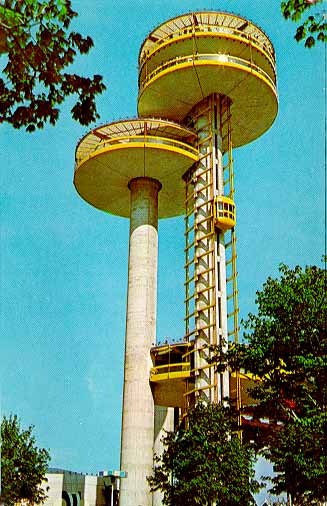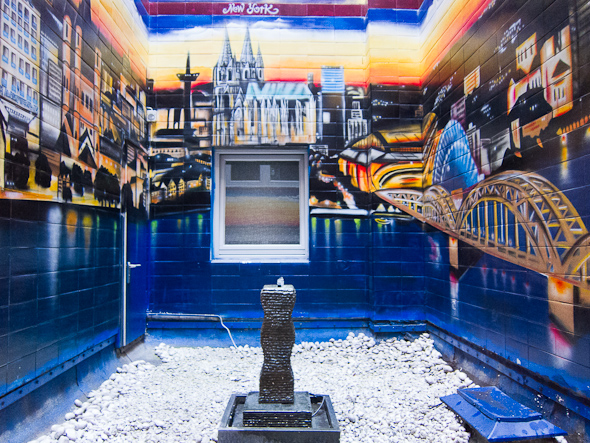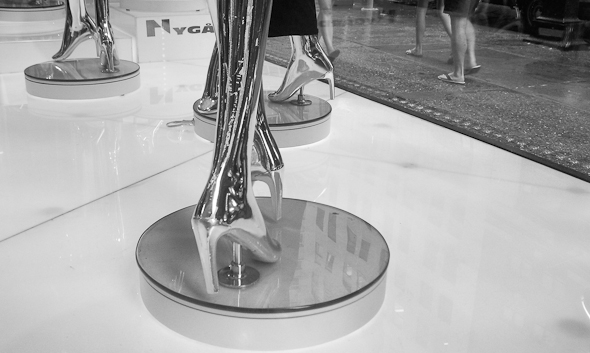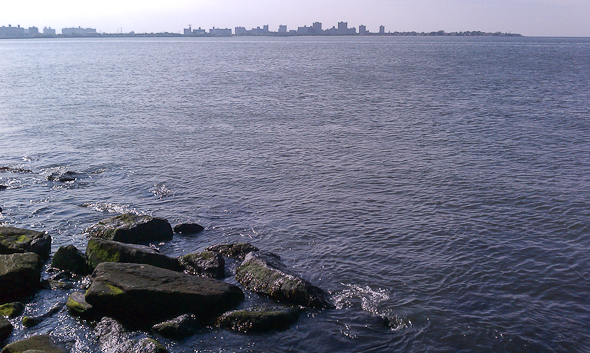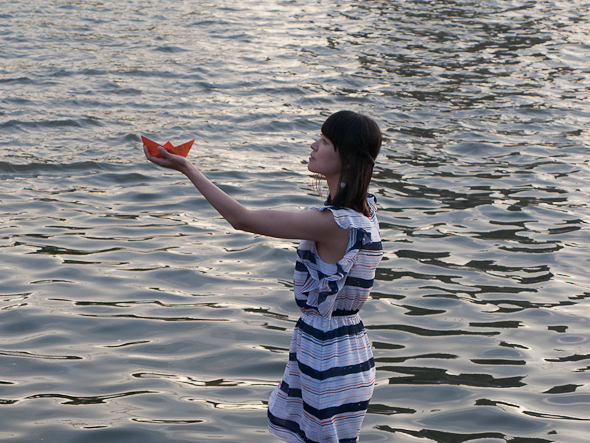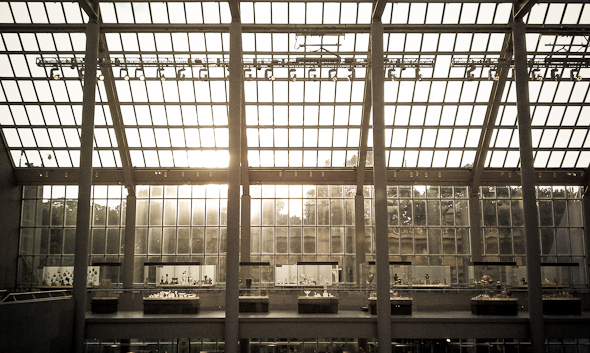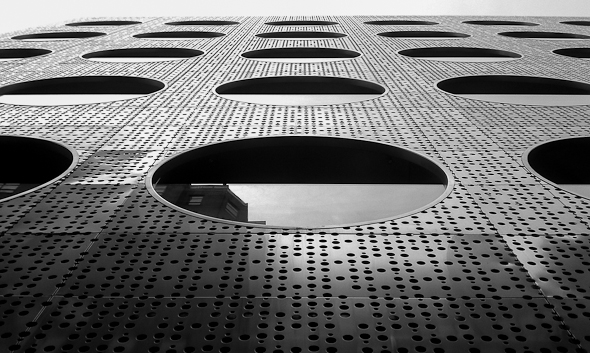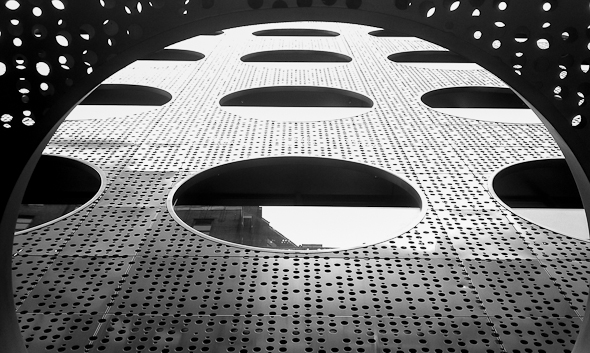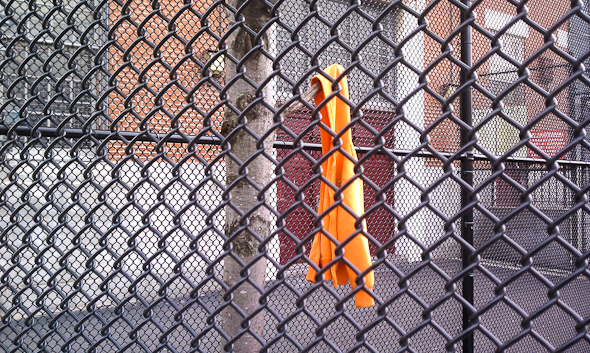Video

Shooting 4K Anamorphic and V-Log with Panasonic’s GH4. Ten Valuable Lessons.
UPDATED: I just added two video tutorials: one comparing “Panasonic’s V-Log L vs. Cinelike D” and the second one “Conforming 4K Anamorphic Footage in Adobe Premiere Pro.”
Anamorphic is enjoying a huge comeback. The reasons to go this route vary from project to project, but generally it’s the desire to achieve a different look and use as many pixels from the sensors as possible. Panasonic’s Firmware Update v.2.2 (available here) enables an Anamorphic (4:3) Mode capable of recording video in 3328 x 2496 pixel (equivalent to approx. 8.3-megapixel) resolution at a frame rate of either 23.98, 24, 25 or 29.97 fps. With an anamorphic lens such as 2x Lomo lenses (see below) we now can capture and un-squeeze a 3356×2496 image in post-production. To make things even better, 4:2:2 / 10 bit HDMI output is also available.
Just like in 2013 when we had the opportunity to field test a GH3 in the Middle East and last year when we shot with one of only three prototypes world-wide of the GH4, for the past couple of weeks I had the privilege to work with director Davis Northern, DP and tech wizard Sean Davis and many other talented people on one of the very first GH4 Anamorphic AND V-Log L projects, shot exclusively for Panasonic North America and produced by The Digital Distillery.
Panasonic 4K Anamorphic and V-Log L – Official Video from The Digital Distillery Inc. on Vimeo.
The project was exciting and very challenging, as working with hardware prototypes and beta versions of software or firmware always is. We had a lot of moving pieces and an extremely tight deadline, but I’m proud of the final results and very satisfied with the lessons learned. This article covers some of the most significant ones, and it is written from my very own personal perspective. As always, I try my best to be as objective and brand agnostic as possible. The lessons aren’t in any specific order and some links will take you to articles with additional information . Please consider using our links to help support our very time consuming articles and tutorials.
Ready? Let’s go!
1. Shooting Anamorphic
It can definitely be achieved by a very small crew on a small budget. We mostly shot with a crew of three, with very limited gear and time. I’ve always assumed you needed a 2-ton truck and a crew of 30 to pull this off. Clearly, this was not the case for us.
2. Lenses
In terms of lenses, we opted to keep a “low profile” while keeping our options open. In other words, we rented a set of vintage anamorphic Lomo lenses (35, 50, and 75mm) and tested an SLR Magic as well as a Letus AnamorphX 1.8X Pro Adapter and a Veydra Mini Prime.
A. Lomo:
The lenses are huge and heavy. Lomo 50mm + 75mm with case = 25lbs. Lomo 35mm with case = 35lbs with each case weighting about 30lbs. Not ideal for the “guerilla” approach we needed for this project. They definitely have a unique look, but are very hard to focus, especially when using a very flat profile. We rented the set for $500/day or about $1,700 for a week including tax. Not cheap by any means but definitely worth the investment in terms of time and quality.
If I were to shoot this project again (or on upcoming anamorphic projects) I probably would test the Cooke Anamorphic/i Lenses (25, 32, 40, 50, 75, 100, and 135mm with a 2x squeeze). Unfortunately these lenses cost about $30,000 each, and the rental rate is about $500 per lens, per day.
B. SLR Magic:
We had access to a very nice selection of Panasonic glass that we wanted to use with an SLR Magic adapter. The first challenge was that the front diameter on all the lenses has to be below 62mm in order to use the step down rings. The second limitation was (for the Panasonic lenses) that anything wider than 28mm would vignette. We could have used the Panasonic 12-35mm lens, at 28mm or longer (kind of pointless), but for some odd reason with the SLR Magic adapter it vignetted all the way even at 35mm. The Panasonic 35-100mm didn’t vignette at 35mm. Go figure. The next usable lens on our Panasonic arsenal was the beautiful 42.5mm Noticron f/1.2, but we needed a step DOWN ring (from 67mm to 62mm) that wasn’t included with the kit. The last option was the Panasonic 35-100mm f/2.8 lens, which worked well but focusing was a MAJOR issue (not Panasonic’s fault). I found the SLR Magic system very finicky and unreliable and unfortunately I can’t recommend using it.
C. Letus Anamorphx:
The Letus Adapter worked much better than SLR Magic but it was also cumbersome. A matte box is pretty much required and there was an issue with one of our widest lenses. The lesson here is, if you are shooting anamorphic, use the real thing.
3. Storage
There’s some heavy math involved when shooting Anamorphic. An anamorphic lens produces roughly a 2X horizontal squeeze of the image onto film. Traditional anamorphic lenses were designed to work on a 4:3 standard. The anamorphic footage captured with the GH4 on the Atomos Shogun is 3840×2160, so not technically 4K but pretty close. Shooting internally (to an SD card) the footage is 3328×2496, so greater vertical resolution than the 4K standard, but not full 4K horizontal resolution. To keep things in perspective, the 4K footage out of the GH4 4096×2160.
As you would expect, the files are huge. Shooting ProRes 422 you need about 4GB per minute of footage. Two cameras: 8GB, after only one backup you are at 16GB per minute. So somewhere around 20GB per minute is a pretty safe storage estimate for a two-camera setup. As always, we trusted all our very valuable assets to G-Tech Hard Drives.
Regarding Solid State Drives, Atomos has a great chart with all the supported drives for the Shogun and other devices. Make sure you triple check the chart before investing in one.
One SECOND of footage takes about 50MB so even if you are shooting into seemingly endless Solid State Drives, being smart about when to start rolling and when to stop can save a lot of storage.
4. HDMI
As we were shooting, Atomos was literally finishing writing the Shogun’s firmware update (available in May or June as a free download) will enable a number of awesome features:
- Anamorphic de-squeeze for Panasonic GH4 and standard lenses
- RAW recording to ProRes, DNxHR and Cinema DNG for compatible RAW formats
- Expanded RAW compatibility to include Sony FS series, Canon, Arri and AJA
- 3D LUTs on HDMI/SDI output
- Cinema 4K DCI support
- Uncompressed V210 support
- Genlock
We had to use a Small HD Pro7 (to de-squeeze) and the Shogun (to record in 4K). The setup seems pretty obvious after a lot of trials but it wasn’t at first. Here’s the executive summary that will hopefully save you some time and stress:
1. Micro HDMI to Standard HDMI cable from the GH4’s HDMI OUT to the Atomos Shogun HDMI IN
2. Standard HDMI to Standard HDMI cable from the Atomos Shogun HDMI OUT to the Small HD HDMI IN
3. In the Shogun, the 4K downconvert option should be OFF while connecting the Small HD and turned ON when everything is properly connected.
Our Small HD had a nasty tendency to constantly lose signal for no apparent reason, so step #3 had to be repeated many times throughout each shoot.
5. Premiere Pro CC 2014 Workflow
To be totally honest, I was shocked by how easy it was to conform the footage in post. Here’s what you need to do:
1. Import the footage the way you normally do.
2. Select the anamorphic clips.
3. Go to clip > Modify > Interpret Footage
4. Under “Pixel Aspect Ratio” select “Conform To” and “Anamorphic 2:1 (2.0).
5. Create a “new sequence from clip” and start cutting.
6. Done and done. Wow!
Here are some screen grabs from the camera’s LCD:
6. Focus
Focus is super, extra, hyper critical, especially when shooting with a very flat profile like the one we used. Unfortunately we couldn’t trust the SmallHD and had to rely 100% on the Shogun at a 1:2 zoom.
7. Accessories
• A sun hood for your external monitor is absolutely essential (if given the option get the black version).
• Obviously you will need lens adapters if you are planning to use the SLR Magic or Letus AnamorphX options.
• Make sure you get plenty of batteries, The small battery that comes with the Shogun lasts about 30 min only and we got about one hour of recording time with TWO Canon batteries on the Small HD. Instead of buying tons of batteries I’m a big fan of renting them (more here). The same goes for additional Solid State Drives.
8. Bonus lessons:
• Shooting anamorphic takes a lot practice and fine-tuning. I’d recommend scheduling at least a full day to test all the gear before a shoot.
• If we keep a small footprint and move fast, we can get a lot done.
• The “shoot without lens” on the GH4 must be turned on in order to work with the Anamorphic lenses.
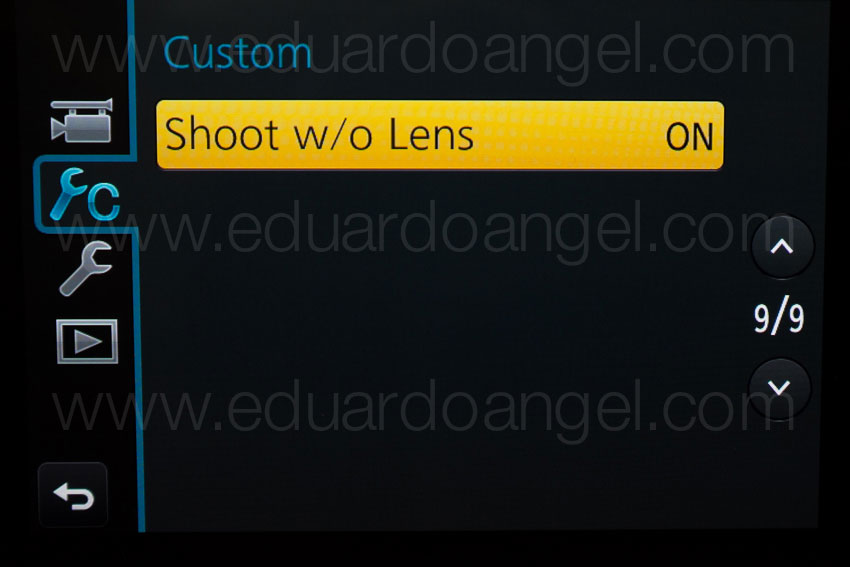

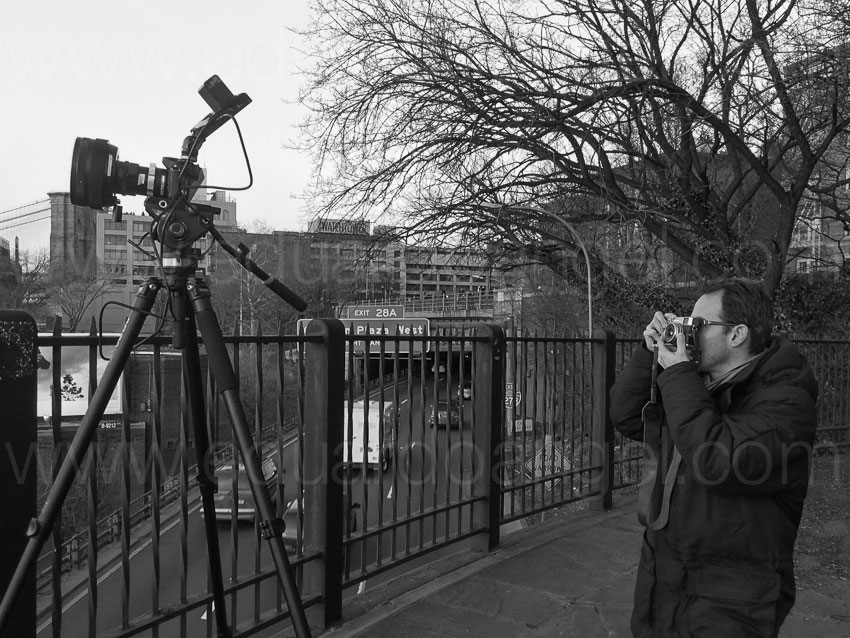
And…..here are two more videos (not anamorphic) shot with the Panasonic GH4. Check them out and let me know if you have any questions or comments via Twitter (@EA_Photo)
Photography
Visual Serendipity 73: Neighborhood of make-believe.
This past weekend we came across a great exhibit at The American Museum of Natural History entitled, “Our Global Kitchen: Food, Nature, Culture,” that explores how food is produced and distributed throughout the world; from farm to fork.
This miniature from the exhibit reminded us of Mr. Roger’s Neighborhood of Make-Believe. (more…)
Photography
Visual Serendipity 72. Soap Bubbles.
A very quick snapshot that brought back a lot of wonderful childhood memories. This girl knows how to enjoy the Summer in New York.
Photography
Visual Serendipity.
“Los atardeceres caleños, como su brisa, no se parecen a nada, en ninguna parte.”
Shot in Cali, Colombia (with O).
Photography
Photography
Photography
Photography
Discovering Oman and the United Arab Emirates. 101 Views.
Here’s a somewhat random selection of 101 images from a recent trip to the United Arab Emirates and Oman. From photographing the Royal Suite at a 7-star hotel, navigating Gold and Spices Souks, getting lost at Fish Markets, and witnessing the Arabian desert, abandoned copper mines and traditional Omani Bullfighting, I had a truly fantastic experience.
About half of these images were shot with the new Panasonic Lumix DMC-GH3 camera and the Panasonic Lumix G X Vario 12-35mm F2.8 ASPH Power OIS lens. I had plenty of time to play with the camera and will be posting my “review” and impressions here in a couple of days.
Feel free to click on any image to enjoy a much larger PhotoShelter slideshow.
Middle East – Images by Eduardo Angel
Photography
Random Unpublished Images.
I was looking for something else, and realized that I had a ton of relatively new, unpublished images. I grabbed 40 from my PhotoShelter unpublished galleries to share with you today. I hope you like them.
Around the World II – Images by Eduardo Angel
Photography
Visual Serendipity.
After finishing a client meeting on Lexington and 66th Street, I walked by the “Seventh Regiment Armory” and saw this. I diligently took my weekly picture, and rushed to my next meeting. A few days later we found out that what was happening inside is called “the event of a thread”, a multisensory affair, with “readings, sound, and live events within a field of swings that together invite visitors to connect to the action of each other and the work itself, illuminating the experience of the singular and collective body.”
Here’s the complete info. Please share below if you have been or are planning to go to this event! Sounds pretty cool.
Photography
Visual Serendipity.
Grand Central Terminal, seen from a very unusual catwalk’s view. While working on a consulting project for Metro North, I had access to a unique, VIP, once-in-a-lifetime, behind the scenes tour of Grand Central. The main lobby, which I always thought was huge, is actually a tiny part of the station. According to the travel magazine Travel + Leisure, Grand Central is “the world’s number six most visited tourist attraction”, bringing in approximately 21,600,000 visitors annually.
Photography
Photography
Visual Serendipity.
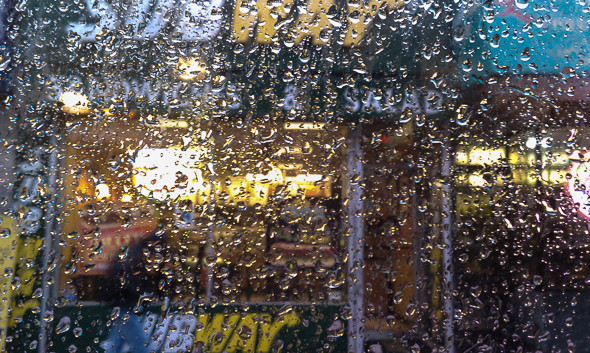
Not bad for a two-year-old phone. This is Week 44 of Visual Serendipity, our series of images taken with a cellphone.
Photography
Visual Serendipity. NYC Subway.
By now, New York City’s subway system has been restored to “limited service”, as efforts continue to dry out flooded tubes, track, signals and other components damaged in last week’s “Sandy” storm. Below is the condition of the subway map after the hurricane:
Photography
Visual Serendipity.
It doesn’t get more serendipitous than this. After Hurricane Sandy passed through Brooklyn leaving behind floods, fires, and a long trail of destruction, this was the first image I saw when I woke up. I had several cameras handy planning (unsuccessfully) to document the hurricane from our window. Two images later, the clouds covered the rainbow and it was gone!
Photography
Visual Serendipity.
The 1964 World’s Fair New York State Pavilion designed by Philip Johnson is simply awesome. It “featured three observation towers, one of which at 226 feet, was the tallest structure at the Fair. Speedy “Sky Streak” capsule elevators whisked visitors to the observation platform above. Beneath the towers was the Tent of Tomorrow, the world’s biggest suspension roof (larger than a football field), supported by sixteen 100 foot columns. Translucent colored panels in the roof flooded the tent’s interior with colors.” Sources here and here.
We normally don’t use other images on our Visual Serendipity series but these two are too good to skip.
Photography
Visual Serendipity
I found this image yesterday while walking around the Lower East Side, or “LES” as it is called by the locals. I believe it shows how many different and simultaneous things are happening in this city at any give time. Living in New York City can be very exciting, or very exhausting, depending on your day.
Photography
Photography
Visual Serendipity.
Something I truly love about New York is that it is a “pedestrian friendly” city. Not only it is much faster (and cheaper) to walk somewhere instead of taking a train or a cab, it is also a good exercise. Keep walking.
Photography
Visual Serendipity.
Another hidden gem in Brooklyn. If you are willing to bike with me for 1.5 hours I’ll take you to this location.
Photography
Visual Serendipity.
Woody Allen’s, Manhattan, is about a divorced New Yorker dating a high-schooler, and looking for love in the mistress of his best friend. Quite a dark story there. I’m sure the city has changed a lot since the movie was released in 1979.
Photography
Visual Serendipity.
A true serendipitous moment. While walking in Dumbo I saw this unknown girl posing for her friend. I was able to snap only two pictures before they were gone. I have no idea what their shoot was about, but I loved the random geometries and the quality of the light.
Photography
Visual Serendipity.
The Metropolitan Museum of Art in New York City measures almost 1?4-mile (400 m) long, and occupies more than 2,000,000 square feet (190,000 m2). Every single time I go, and I do it often, I discover something new.
Photography
Visual Serendipity.
Serendipity: noun; the occurrence and development of events by chance in a happy or beneficial way.
One of the many super cool boutique hotels in New York City, the “Dream Hotel” is located “between the hip, cool Meatpacking District and chic, charming Chelsea.” According to its website the hotel offers a “new experience in full-service luxury travel, complete with deluxe amenities and unique dining options.”
I wouldn’t know, since I’m pretty sure I could’t even afford breakfast there. I just like the façade.
Photography
Visual Serendipity.
“Hanging out” is our newest image on “Visual Serendipity,” a weekly series of unplanned photographs taken with an Android cellphone. Serendipity is the occurrence and development of events by chance in a happy or beneficial way.
Photography
Visual Serendipity.
Serendipity: noun; the occurrence and development of events by chance in a happy or beneficial way.
The Flatiron Building was designed by Chicago’s Daniel Burnham as a steel-frame skyscraper in white terracotta, and intended as the headquarters of the Fuller Construction Company. The building was soon dubbed “Flatiron” after its unusual shape, caused by a triangular plot.
The building inspired unforgettable photographs by Edward Steichen and Alfred Stieglitz
, and it is now one of the most photographed and recognizable landmarks in New York. It is also frequently used on television commercials and documentaries, in the opening credits of the “David Letterman Show”, during scene transitions in “Friends”, and as the headquarters of the “Daily Bugle Newspaper” in Spider-Man.
